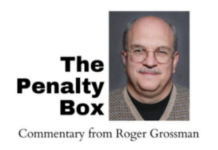
The civil trial between the Helmans versus Barnett’s Bail Bonds, bounty hunters and an insurance company continued Thursday with more testimony from witnesses.
The four-day civil jury trial is being heard from a jury of four women and two men and two male alternates in Kosciusko Circuit Court Judge Mike Reed’s courtroom.
Atta and Larry Helman are suing Barnett’s Bail Bonds, Inc.; Tadd S. Martin, Daniel S. Foster and Michael C. Thomas, who were bounty hunters for Barnett’s; and Lexington National Insurance Corporation, the surety bond company, after an Aug. 25, 2014, shooting at the Helmans’ home killed Gary Helman and left Larry seriously injured.
Atta is the mother of twins Gary and Larry. On the day of the incident, the bounty hunters went to bring Gary into custody after he failed to appear for court dates and had active warrants for his arrest. Gary was living at 9174 Doswell Blvd., Cromwell, with his mother and Larry. A shootout ensued during the apprehension, leaving Gary dead in the back bedroom, Larry seriously injured on the back porch from two gunshot wounds and Martin also seriously injured from five gunshot wounds on the back porch.
The Helmans allege the defendants are guilty of actions including negligence, battery, trespassing, residential entry and intimidation. They also say Gary did not live at the address but was merely staying in a bedroom there since divorcing in 2003, meaning it was against Indiana law for bail bondsmen to enter the home Atta owned.
It was determined that Larry was unarmed at the time Martin and Thomas showed up on the back porch that day. However, Martin had already been shot twice by Gary and was wounded, bleeding severely on the ground when Martin alleges Larry continued to approach him, despite his requests for Larry to stop, so he shot him once.
Atta alleges when Martin and Thomas appeared on her porch she was basically manhandled by Martin, shoved and pushed out of her home and held at gunpoint. On Thursday, Martin testified he never held Atta at gunpoint at any time and that he only grabbed her elbows to try to shift her to Thomas so she would not interfere in the apprehension of Gary, who was inside.
Defense counsel said Gary’s address was listed as the Cromwell residence on all paperwork, including bond paperwork, his driver’s license and legal documents, making the bounty hunters’ presence on the property legal.
The Helmans are represented by Bradley Colborn and Michael Misch, of Anderson Agostino?& Keller, South Bend. Barnett’s Bail Bonds Inc. is represented by local attorney Jay Rigdon. Lexington National Insurance Corporation is represented by Angela Hall and Jason Rauch, of Faegre Drinker Biddle & Reath LLP, Indianapolis; and Martin and Foster are representing themselves.
On Thursday, Colborn called former Kosciusko County Sheriff Rocky Goshert to the stand, who was the sheriff at the time of the 2014 shooting. Goshert testified that he met with Myra Barnett twice before Myra sent bounty hunters to the Helman home.
At the first meeting, “She was explaining she had a warrant for Gary and was going to get a bounty hunter,” Goshert said, adding that the sheriff’s department declined to offer any assistance in the warrant service. “I said, ‘Be careful, because you know Gary. You go in that house, somebody’s liable to get shot.'”
Goshert said Gary had a reputation with law enforcement as being dangerous and unpredictable in how he was going to react. He also echoed Wednesday’s testimony from former KCSD Det. John Ayres about using the SWAT Team in 2013 to serve a warrant and take Gary into custody from the Cromwell home. Goshert also said that he’s been in law enforcement for more than 17 years before retiring and he has only known Gary to live at the Doswell Boulevard home.
Next, jurors heard from Myra Barnett, who was president of Barnett Bail Bonds Inc. at the time of the incident. She is accused by the Helmans of ordering the bounty hunters to bring Gary in “dead or alive” – something she vehemently denied.
Barnett said she and her husband started the bail bond company in 1993 after her husband retired from the Indiana State Police and got his first pension check but it wasn’t enough to cover the bills.
She also testified that throughout the company’s entire duration, they have always written bonds under Lexington – a national company based in Maryland that issues bonds for bails, construction bonds or license bonds.
Barnett explained the process for what happens when a defendant fails to show up to court.
“When the defendant doesn’t show in court, the bail bondsman gets a notice to produce,” she said. She said the bond company, and the surety insurance company, are put on notice that they have 365 days to produce the defendant to the courts, otherwise they will be responsible to start paying on the total bail. In Gary’s case, this would have been picking up a $25,000 tab.
Barnett also testified that she and her husband used to do the searching for defendants who failed to appear on their own, but as they got older they began contracting that work out to licensed recovery agents.
The Helmans’ attorney has accused the defendants of doing whatever it took to get Gary “dead or alive” so the bounty hunters could cash in on their $2,500, and Barnett’s and Lexington would be “off the hook.” Barnett’s and Lexington both denied that claim, citing paperwork signed by Atta that actually made her the responsible party.
Barnett said she was “very upset” when she heard the news about what happened on Aug. 25, 2014, and Barnett’s did pay Martin his $2,500 for the job.
Rigdon asked Barnett about how many bonds they write each year, to which Barnett said between 360 to 480 and that only about 10% of her bonds don’t show up in court, and less than 10% require her to use a recovery agent.
“Did you ever tell Tadd Martin to bring Gary Helman in dead or alive?” Rigdon asked her.
“Oh my gosh, no,” she said.
Martin also confirmed with Barnett during a cross examination that Barnett told him the Helmans were “unstable and crazy and sue happy.”
When Foster took the stand, he said Martin had asked him to help in the recovery and that the case “was given more care than usual because of fear of lawsuits.”
He also testified that the goal that day was for Foster to “knock on the front door, tell them why we were there and hopefully make enough noise to flush them out the back” where Martin and Thomas were waiting. Foster said the information provided to Martin from Stacey Staley – a reporter who worked for The Papers Inc. at the time and was working as an informant for the bounty hunters and Barnett’s – about what the individuals were wearing right before the attempted apprehension was helpful.
Foster also said that during the last eight years that he’s been involved in the bail bonds business he has never had to fight someone, wrestle someone, shoot anyone or pepper spray anyone. He said he’s worked about 400 recoveries and worked with Martin on about 100.
When asked about the law about entering a third-party’s home, which is what the Helmans are accusing them of – Foster said, “You don’t have to own property to be bonded out of jail, so you can apprehend the fugitive where he lives.”
Next, jurors heard from Martin, who walks with a cane following the incident. He said he got licensed in 2011 and had aspirations of becoming a U.S. marshal before he became disabled. He also testified he has never had to draw a firearm before this incident and that he had done surveillance on the Cromwell home more than a dozen times. He also said he asked Foster to help with the job and later brought on Thomas after they realized Atta could become problematic and interfere in the apprehension. Thomas’ job was going to be to restrain Atta while Martin apprehended Gary, Martin said. However, that plan didn’t work, because after the gunfire rang out and Martin was down, Thomas took off, and it was even speculated by Martin later in police interviews that Thomas may have gotten high on marijuana after the shootout to “calm down.”
Martin said this was his first of his nearly 100 recoveries where he had informed a law enforcement agency – in this case the sheriff’s department – and heard the sheriff’s department didn’t want to help. He also denied ever holding a gun to Atta’s head and that he felt a real fear of what Atta might do because information from Staley quoted Atta as saying she has a propane tank in her house and if anyone comes to get her boys, she’ll shoot it and blow them all out.
“Stacey told me these people will do whatever they have to do to hurt anyone trying to bring Gary to justice,” Martin said.
Martin testified that he only shot Larry once and that was in fear of being killed by Larry since he was incapacitated on the ground, “bleeding to death.”
“As soon as Larry dropped, Gary was in the doorway bearing down on me with a gun,” Martin said. “The only way I was going to keep from being killed by that man was to return fire.”
It was noted that no one was criminally charged in the incident.
Lexington brought Mark Holtschneider to the stand, who has been the executive vice president and general counsel at Lexington National Insurance Corporation since 2004. The purpose of his testimony was to explain to the jury the paperwork and agreements that are made between the insurance company and Barnett’s. Barnett’s are an independent contractor under Lexington, he testified, and Lexington had nothing to do with Barnett’s beyond issuing surety bonds for bails written by Barnett’s.
The trial is operating in two phases. Phase I is for jurors to decide if any or all of the defendants are liable for the actions and harm caused that day. If any or all of them are found to be liable, then Phase II will begin. Phase II will be to address the amount of damages that will be awarded to the Helmans.
Today will begin with closing statements before jurors are given instructions to make a decision on Phase I.




